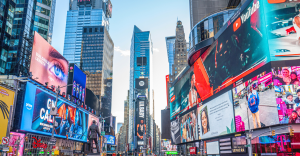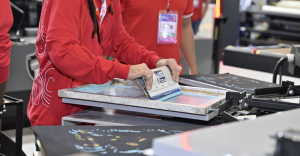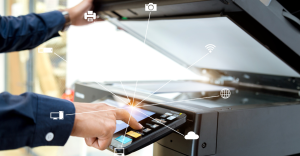Out-of-Home advertising (OOH) has evolved significantly over the years. From traditional posters and billboards to digital and interactive screens, and now to immersive experiences, OOH has had to constantly reinvent itself to capture the public’s attention, the most valuable commodity of our times.
Today, modern OOH goes beyond screens and videos. In various cities across Brazil, for example, street clock towers are being transformed into creative media platforms. A notable example is Britânia’s campaign, which turned street clocks into giant replicas of air fryers. Besides the visual impact, campaigns are incorporating sensory experiences, such as scents and textures, to create a deeper connection with the audience.
History and Trends
According to Sérgio Rizo, Ph.D., Director of RS Projects and RS Education, and a researcher on advertising dynamics, the trend in Out-of-Home (OOH) media was significantly reshaped and driven by the Clean City Law, which came into effect in São Paulo in 2006 and banned traditional billboards in the city.
With the prohibition of traditional media on city streets, companies had to reinvent their out-of-home advertising strategies. “Estimates suggest that around 25% of the investment in outdoor advertising is restrained due to the absence of traditional advertising on São Paulo’s streets, where today we only have panels,” he notes. “In this sense, when we talk about outdoor media, we’re discussing actions connected to the urban space. This engagement with the city involves its own didactics, a unique way of experiencing, which is very different from other media types—we’re entering the field of experience,” the specialist explains.
OOH and Multisensory Experiences
Multisensory advertising is a growing trend in Out-of-Home (OOH) advertising. Brands are leveraging human senses to create more engaging and thus memorable experiences. Physical contact with product replicas, for example, allows consumers to interact directly with the brand. Specific scents can evoke memories and emotions, making the experience even more impactful.
Sensory strategies like these offer several benefits. They help build a stronger emotional connection with the audience, sparking sensations that traditional media can’t replicate. When consumers can touch, smell, or even hear something associated with the brand, the memorability of the advertising message is significantly enhanced. Moreover, these sensory experiences tend to generate higher engagement, as they’re harder to ignore or forget. In the attention economy, strategies that go beyond the obvious hold
greater significance. In this context, OOH plays an even more central role in attracting and engaging consumers.
Multisensory OOH: Challenges and Opportunities
While multisensory OOH campaigns offer numerous benefits, implementing them comes with challenges. The costs and logistics involved in creating and maintaining such installations can be significant, often prohibitive for many businesses. Additionally, there are legal and regulatory issues to consider, especially in public spaces.
Expert Sérgio Rizo highlights an important consideration. “Thinking about the sensory aspects of advertising means finding ways to engage with individuals in their daily routines within urban spaces, even in private areas like shopping malls,” he says. “In this regard, campaigns must first and foremost examine the regulations to understand what is or isn’t permitted, as there are often many variables beyond the conventional that may not be allowed,” he warns, noting that this could be considered the “Achilles’ heel” of the trend. The unpredictable nature of unique OOH installations makes regulatory compliance a complex challenge.
Nevertheless, the opportunities for brands embracing these strategies are vast and varied. By standing out with innovative campaigns, brands can increase visibility, strengthen their market image, and enhance
their long-term positioning by associating with concepts like innovation and enjoyment. The key is finding a balance between creativity and practicality, ensuring that the experience offered is impactful yet feasible—both financially and logistically.
How to Measure the Results of OOH Campaigns?
When it comes to branding-focused campaigns, those aimed at exposing the brand or capturing public attention for a product—measuring the return on investment (ROI) can be challenging. Attention, as a subjective asset, is inherently difficult to quantify. According to Sérgio Rizo, about 86% of people who move through urban areas report remember seeing this type of media on city streets. “This is a very high indicator compared to other types of media and highlights the role of the city in shaping individuals,” he explains.
There are several strategies and methods for assessing the impact of such campaigns. Some examples include:
1. Consumer Surveys: Conducting satisfaction surveys and gathering direct feedback from customers can provide valuable insights into the campaign. Questions regarding brand recall, sensory experience, and purchase intent can help gauge impact.
2. Engagement Analysis: Monitoring engagement on social media and other digital platforms can indicate the campaign’s success. Comments, shares, and brand mentions can reflect the level of interest and public involvement with the campaign.
3. Sales Data: Comparing sales figures before and after the campaign can help determine if there was a positive impact on product sales.
4. Local Traffic and Interaction Tracking: Measuring foot traffic and interaction with sensory installations can provide concrete data on the campaign’s reach. Motion sensors and cameras can track the number of people interacting with the installation, and tracking giveaway distribution and engagement with kiosks, for example, can further enhance data collection.
These combined approaches can provide a comprehensive view of the impact of sensory strategies in OOH, helping brands fine-tune and optimize their campaigns to achieve the desired results.
In summary, OOH is evolving and modernizing, aiming to stay relevant in an increasingly digitalized world. Moving beyond screens, OOH media can focus on incorporating sensory experiences that capture both the attention and hearts of consumers. As brands continue to explore these new possibilities,
more and more creative and engaging campaigns are being developed in Brazil and worldwide. Now it’s your turn: how can your business leverage this movement to connect with your audience?




